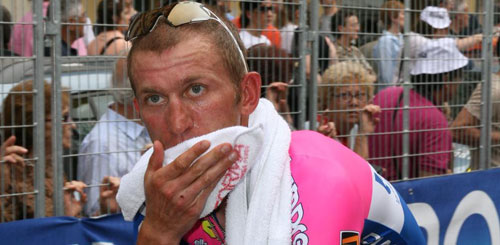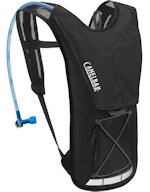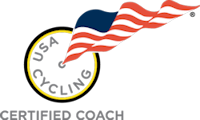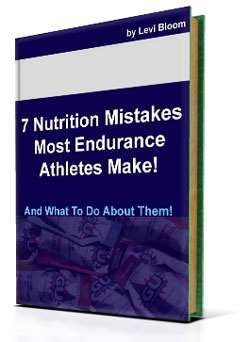
A smooth, fluid pedal stroke combined with a good cadence is an integral part of riding fast and efficiently (and therefore winning races).
Table of Contents
What is cadence?
Cadence can be described simply as your pedaling speed. It is measured in Revolutions Per Minute, or RPM. This is the number of times your legs complete full circles in 60 seconds of riding.
(Don’t know your cadence? Here is how to count your cadence.)
Cadence varies between riders and even the same rider will vary their cadence in a given situation, but most elite riders use a fast cadence. There is no “one size fits all” perfect cadence, but we’ll look at the differences between the high and low cadences in this article.
For the purposes of this article, I will use the following measurements to describe cadence:
- Very slow: 50-70 RPM
- Slow: 70-80 RPM
- Moderate: 80-90 RPM
- Fast: 90-100 RPM
- Very Fast: 100-110 RPM
- Extremely Fast: 110+ RPM
To simplify even further, you can consider anything under 90 RPM to be a low cadence, and 90+ RPM would be a high cadence.
High vs Low Cadence: The Pros and Cons
Let’s start by looking at the pros and cons of each cadence…
If you are riding with a high cadence in an easy gear, pedaling is going to tax your cardiovascular and respiratory systems. If you have a strong heart and lungs, you can probably hold a fast cadence for a long period of time. Because of the easy gear, it will produce less strain on your muscles.
Low cadence riding in a hard gear taxes your skeletal muscles, specifically your quads. Since you’re using a big gear, you have to apply lots of force to turn it. If your legs are very big and powerful, this may work well for you.
Turning the big gear slowly has less effect on your heart and lungs, so you’re less likely to be gasping for air or have a skyrocketing heart rate.
However, there is an edge towards the higher cadence riding. Your heart and lungs can take repeated punishment for long periods of time (and they recovery quickly after hard efforts,) while your muscles will fatigue relatively quickly.
A high cadence also places less stress and torque on your knees. So if you have bad knees, you’re usually better off spinning faster, in a low gear.
There is also a tactical advantage to using a high cadence. Spinning fast in a low gear allows for faster accelerations, because you can bump up your cadence even more to increase your speed. If you need to shift gears, that’s also easier, since the drivetrain in under less stress.
If you’re pushing a big gear and the pace changes, you’re in trouble. You won’t be able to change cadence or shift gears quickly, so you may get dropped.
Cadence in the Pro Peloton

The most noteworthy example of cadence in the pro peloton is the rivalry between Jan Ullrich and Lance Armstrong in the mountain stages of the Tour de France. When Lance came back to win the Tour, he was riding at a very fast cadence, usually 110rpm or more. Ullrich, on the other hand, was grinding out the big gears at a cadence closer to 65-70rpm.
While both riders were very talented, Lance and his higher cadence always seemed to get the better of Ullrich (and everyone else in the race, for that matter.) But don’t forget, Jan Ullrich won the Tour back in 1997, so it’s entirely possible that some future TdF champs will be turning the pedals slowly.
I’d put my money on a higher-cadence rider, though. There has been at least one study of professional cyclists (from the European Journal of Applied Physiology) that showed a link between high cadence riding and better overall performance. The reasoning is that the less tension on the muscles, the longer you have before fatigue sets in.
Since I don’t have cadence data for all pro riders, I can’t specify what cadence is the most popular, but I’d venture a guess that most riders fall in the 80-100rpm range, depending on the situation. Especially today, with studies and anecdotal evidence supporting a high cadence for performance riding.
Finding Your Most Efficient Cadence
Despite the edge in favor of high cadences, the best thing to do is perform some tests to determine your optimal cadence.
Time Trial Cadence Test
The easiest way to determine your optimal cadence is by performing a time trial multiple times, using a different cadence each time.
First, determine a course on local roads that takes about 10 minutes to complete. This route will be the same for each time trial.
Next, perform a time trial on the course at a cadence of 80rpm. When finished, record your time and rating of perceived exertion (RPE.)
Ride easy for 15-20 minutes, then perform another time trial, this time using a cadence around 95-100rpm. When finished, record your time and RPE.
A couple days later, perform the same test again, but do the first time trial at a high cadence and the second time trial at a low cadence.
Now you can compare the data. Whichever cadence produced faster times and lower RPE values is probably your ideal cadence.
For example, if the slow cadence has your legs burning and your average speed slowing down, while you feel great at a high cadence and cut a minute off your slow cadence trials, it’s a safe bet that you should be riding at a high cadence.
You could perform this test multiple times for a better sample size, but in general, you’re just comparing how fast you could ride a course at different cadences. If you want to get specific, you could try doing time trials at 80rpm, 85rpm, 90rpm, 95rpm, 100rpm, 110rpm, etc.
If you ride comfortably somewhere in the range of 85-110rpm, that’s probably good.
Hill Climb Cadence Test
Find a hill climb that takes about 3 minutes to complete. (You’ll be doing more time trials, but you won’t need to record data.)
On trial one, ride the first 2/3 of the hill in a low gear and a cadence around 95rpm. For the last 1/3, use whatever gear and cadence you want.
On trial two, ride the first 2/3 of the hill in a big gear and a cadence around 80rpm. For the last 1/3, use whatever gear and cadence you want.
To get the results, just remember what you did on the last 1/3 of the hill in each test.
For the last 1/3 of the hill, you probably wanted to recover, and you would have switched to whatever cadence is more comfortable for you. If you were staying in and switching to a lower gear and high cadence, then high cadence riding is for you. If you couldn’t wait to shift to a harder gear and slow your cadence down so you could catch your breath, then you may be best suited for big gear and low cadence riding.
Cadence Summary
There are pros and cons to high and low cadences. You should test out a variety of cadences and ride what is most comfortable and fastest for you.
The ‘right’ cadence is different for everyone, and you’ll probably vary your cadence depending on the terrain, so you don’t have to freak out about getting the exact cadence. All I can say is that your ideal cadence will fall somewhere between “holy sh*t my legs are on fire!” and “I… can’t… breathe!”
If you can’t seem to pick a favorite RPM within that range, err on the high cadence side, just below the point where you can’t breathe steadily.
References
Photo credits: br1dotcom | Rene S
Levi Bloom is an experienced endurance athlete who has been training and competing for over 17 years. A former Cat 1 road and mountain bike racer (professional class on the regional circuit), he is now a cycling coach (USA Cycling Level 3 Certified) and sports nutrition coach (Precision Nutrition Level 1 Certified).










Reading a review of some cadence studies in High Tech Cycling and there are some relevant findings:
Lower cadence is actually more efficient in terms of HR:Power Output.
Higher cadence is more sustainable, as the powerful muscle contractions required to pedal low cadences restrict blood flow and cause more fast-twitch/anaerobic work to occur.
@Matthew
Interesting!
Love article, very helpful resources to teach the Spin Class I needed. Like the counting cadence too if the meter throw me off and counting cadence is back-up plan.
Thank you!?
I’m 6’4″ and I’ve found that when using using a long extra long crankset 190 and 60 tooth chainring that I have plenty torque and power, however I have a very low cadences and some knee pain, but I can ride 18-23mph speeds for hours, then I switched to a 165 crankset and now I have a very fast cadence and low torque, I can ride fast but not for hours. I want to try to find the best crankset and cadence for a 12k flat time trial. last year my best average was 26.8 mph my goal is 27mph
I prefer riding at a low cadence as long as my knees can handle it for about 30 miles with a short break every 15 miles. I average about 18 mph plus on a 38 pound Mountain Bike. My muscles feel the burn, and both my heart and lungs are working as well. I get the benefits of high cadence pedaling with the added benefits of working out my skeletal muscles as well. I recommend low cadence, but only for those people that are capable or strong enough. Yes I could average more than 20 mph on a lighter bike, but I probably get a better going 18 mph plus on my 38 pound Jeep Comanche Classic mountain Bike. Sometimes I get passed by a rider or two, but when I feel the urge I make them pay for it by upping my tempo to the 20 mph if need be. And due to the heaviness of my bike, I see not as a crime to draft off others.
@John
I bet a lot of riders do double takes when they see you’re holding their wheel on a beast of a bike like that!
Surely some mistake: Lance Armstrong never won the Tour de France.From 1999 to 2005, there were no winners, only an egomaniac loser.
It’s still a valid comparison since nobody was awarded the win. My guess is that the PTB decided they were all egomaniacal dopers who were gaming the system. To win Le Tour requires a huge ego, to do it without drugs when other are is near impossible.
Not near impossible just impossible..!!
I remember, when i pedaled high cadence, i was left behind. But, when i switched to low cadence, i became faster and able to catch them and sometimes made me ahead in the race.
High cadence low gear could benifit in climbing, that less stress in the muscles and knees.
@Will
Thanks for sharing. I assume when you switched to low cadence you also mean you used bigger gears, correct? Either way, sounds like it worked! Cheers!
Hey all,
Im a personal trainer and in our gym at the moment we have a cycling challenge to celebrate Bradley Wiggins and his world record distance in 60 minutes. The challenge is to see how close we can get to his distance but only in 15 minutes. We wouldn’t set a challenge for an hour because no one would do it but we times the result by 4 to compare it to Bradley. This challenge can be done on any level but it has to be on one of the lifestyle fitness CLSC Upright bikes. There have been alot of people ask me wether it is better to do it on a high level slower or a low level faster. Ive told them to go as fast as they can on a level that they can maintain or try intervals where you either increase the RPM for a bit then lower it back down or increase the level for a bit then reduce it when fatigue sets in but remain on the previous maintenance pace. For myself I stuck it at a set pace the entire time 115rpm and switched the level from 10-11-12-13 and this seemed to work well. We’ve been wondering if there is any sort of equation for each level that the lifestyle fitness program into the machine. We could work it out but it would take a long time – have an average rpm of 100 on each level for an adequate and equal amount of time and record the distance then divide it up. They must have the values that is programmed in somewhere, if anyone knows it would be great if you could tell us. People like to understand things. Cheers
Also find myself in this dilema now. There are a many hills (5-20%) around where I ride. I’m already on a compact with a 11-32 at the back but I’m struggling to keep my cadence above 70 up these climbs. I’m 40, 6’1 and 180 pounds and quite atheletic so I am at cross roads to swapped down to MTB cassettes or avoid those hills (which might mean limiting alot of the areas around my house) until I improve my performance.
@Jay
I’d hate to tell you to avoid those hills!
Are you having knee pain or other issues that are possibly related to the lower cadence? Does it feel like too much strain?
Because it’s not necessarily a bad thing to be climbing at 60-70 rpm (especially since you’re on the bigger, more muscular side when it comes to climbing.)
Thank you, couch, for balance advice. Some people thing one size fits all not taking into consideration the differences in body type, heart and lung capacity. I just got back on the bike after years of not. Even when I was in great shape riding 10 to 12 hours daily I would never be a great cyclist. My body type kind of precludes that being large boned and rather blocky, not particularly aero.
But I like riding and riding fast as my 60+ year old body can go. I never had much of a sprint but it feels so good when I jump out of the saddle and kick up my speed.
I find a cadence of 75 to 100 is perfect for me. It keeps my old knees happy. The fastest I can spin without bouncing is around 116. I don’t know how those elite riders can go 120+